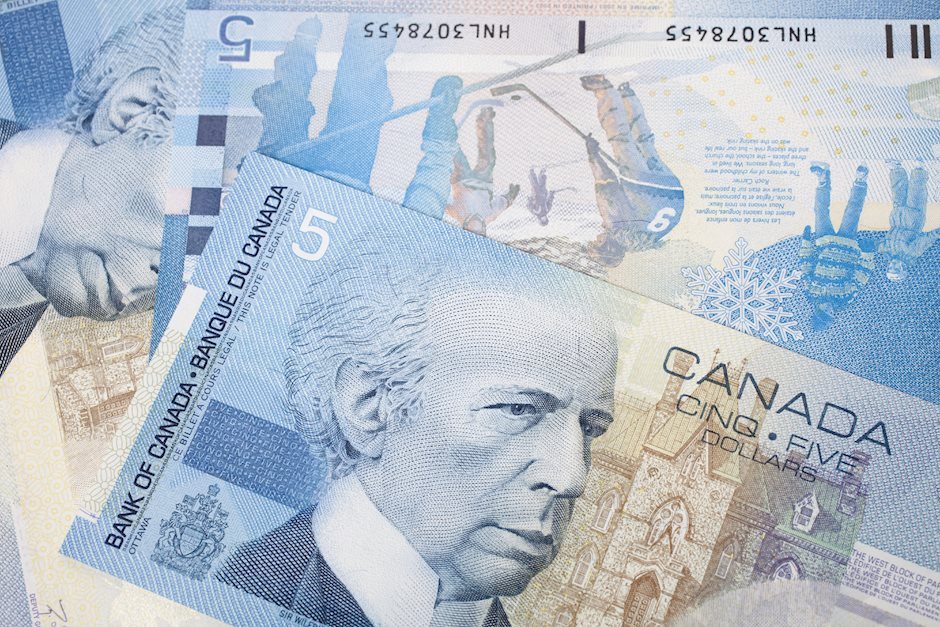USD/CAD recovers to near 1.3750 ahead of Canadian employment data
- USD/CAD edges higher to near 1.3740 in Friday’s early Asian session.
- The US Dollar recovery is bolstered by the upbeat US Initial claims last week.
- The Canadian employment data will be in the spotlight on Friday.

The USD/CAD pair trades with mild gains near 1.3740, snapping the five-day losing streak during the early Asian session on Friday. The uptick of the pair is supported by the firmer US Dollar (USD) after the upbeat Initial Jobless Claims.
Initial claims for unemployment insurance came in less than expected last week, easing some fears about the US labor market. Data released by the Department of Labor showed on Thursday that the initial jobless claims for the week ending August 3 increased by 233,000, compared to 250,000 in the previous week (revised from 249,000), below the consensus of 240K. The upbeat reading provides some support to the Greenback against the Loonie.
The markets remain expecting a strong probability of a half percentage point reduction for the first move and a full percentage point cut by the end of the year. According to the CME FedWatch Tool, traders have priced in 57.5% odds that the Federal Reserve (Fed) will cut 50 basis points (bps) at the September meeting, down from 83% earlier this week. A deeper Fed rate cut expectation is likely to limit the pair’s upside in the near term.
On the CAD’s front, the Bank of Canada (BoC) decided to cut interest rates at its July meeting to 4.5%, hinting at further easing of monetary policy where appropriate. BMO and CIBC analysts forecast a further rate reduction of 75 bps in 2024, or a quarter-point cut at each remaining meeting this year. However, traders will take more cues from the key Canadian employment report, which is due later on Friday. The Canadian economy is projected to add 22.5K jobs in July, while the Unemployment Rate is forecast to rise to 6.5% in July from 6.4% in June.
Canadian Dollar FAQs
The key factors driving the Canadian Dollar (CAD) are the level of interest rates set by the Bank of Canada (BoC), the price of Oil, Canada’s largest export, the health of its economy, inflation and the Trade Balance, which is the difference between the value of Canada’s exports versus its imports. Other factors include market sentiment – whether investors are taking on more risky assets (risk-on) or seeking safe-havens (risk-off) – with risk-on being CAD-positive. As its largest trading partner, the health of the US economy is also a key factor influencing the Canadian Dollar.
The Bank of Canada (BoC) has a significant influence on the Canadian Dollar by setting the level of interest rates that banks can lend to one another. This influences the level of interest rates for everyone. The main goal of the BoC is to maintain inflation at 1-3% by adjusting interest rates up or down. Relatively higher interest rates tend to be positive for the CAD. The Bank of Canada can also use quantitative easing and tightening to influence credit conditions, with the former CAD-negative and the latter CAD-positive.
The price of Oil is a key factor impacting the value of the Canadian Dollar. Petroleum is Canada’s biggest export, so Oil price tends to have an immediate impact on the CAD value. Generally, if Oil price rises CAD also goes up, as aggregate demand for the currency increases. The opposite is the case if the price of Oil falls. Higher Oil prices also tend to result in a greater likelihood of a positive Trade Balance, which is also supportive of the CAD.
While inflation had always traditionally been thought of as a negative factor for a currency since it lowers the value of money, the opposite has actually been the case in modern times with the relaxation of cross-border capital controls. Higher inflation tends to lead central banks to put up interest rates which attracts more capital inflows from global investors seeking a lucrative place to keep their money. This increases demand for the local currency, which in Canada’s case is the Canadian Dollar.
Macroeconomic data releases gauge the health of the economy and can have an impact on the Canadian Dollar. Indicators such as GDP, Manufacturing and Services PMIs, employment, and consumer sentiment surveys can all influence the direction of the CAD. A strong economy is good for the Canadian Dollar. Not only does it attract more foreign investment but it may encourage the Bank of Canada to put up interest rates, leading to a stronger currency. If economic data is weak, however, the CAD is likely to fall.
Author

Lallalit Srijandorn
FXStreet
Lallalit Srijandorn is a Parisian at heart. She has lived in France since 2019 and now becomes a digital entrepreneur based in Paris and Bangkok.

















